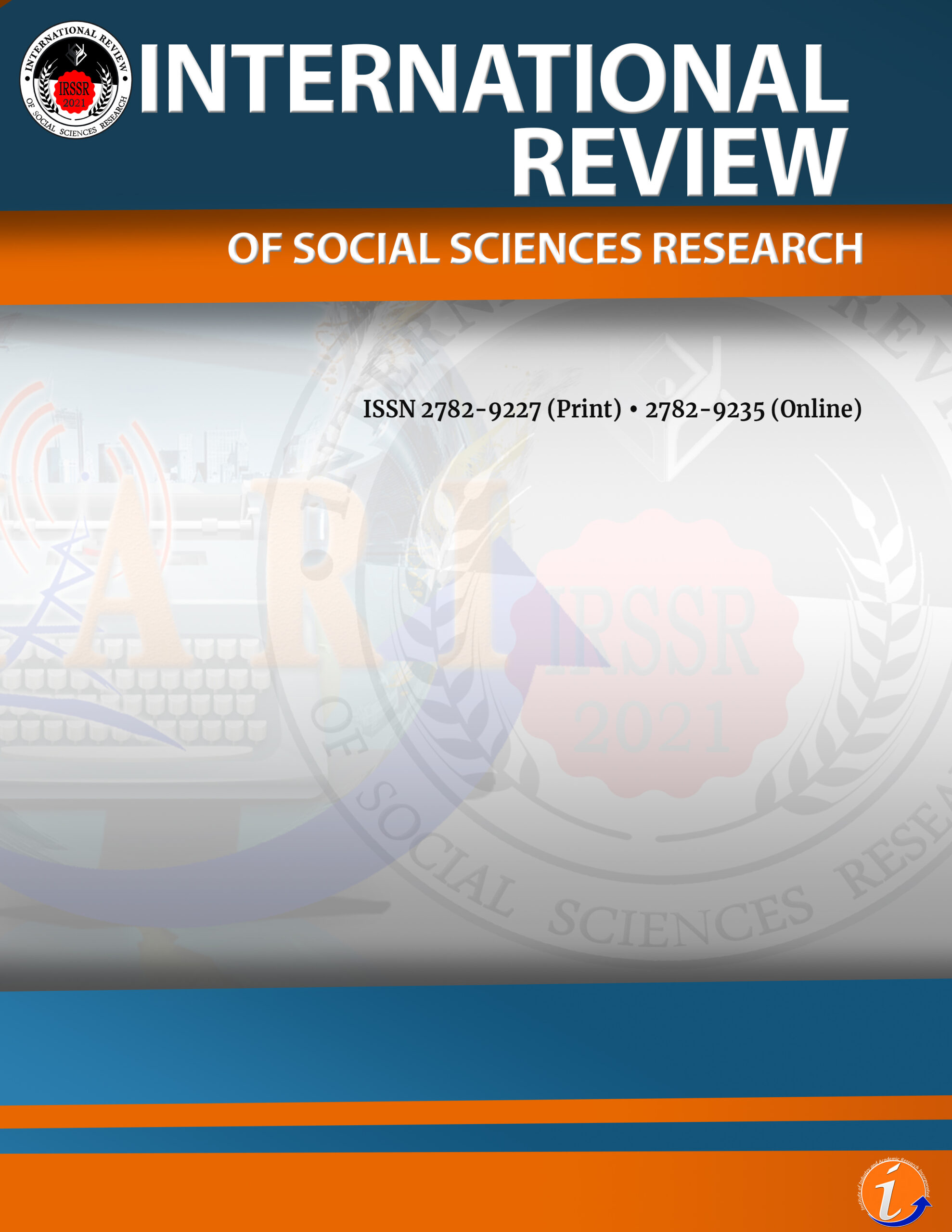The high prevalence of gender-based violence (GBV) in the kingdom of Eswatini is quiet saddening. Women and girl children become victims of GBV to the extent of losing their lives. Therefore, this article sought to find the causes of GBV, collaborative majors and guidelines to help reduce GBV. The paper employed a qualitative research design underpinned by a transformative paradigm as a framework for promoting preventive action toward social justice for marginalized populations. Participatory Action Learning Action Research (PALAR) was employed. A purposeful sample of traditional leaders, religious leaders, law enforcers, NGOs and public were selected. Data was obtained through individual interviews, focus group interviews and analyzed using the thematic analysis approach. Findings obtained revealed various causes of GBV: unequal power relations, socio-economic factors, weak legal and support systems. Study recommends that government in collaboration with stakeholders must establish educational programs and guidelines to fight GBV, improve psycho-social support, strengthen recreational systems, implement programs that focus on poverty alleviation and economic empowerment, decolonization of patriarchal cultural practices and develop awareness programs about issues faced by GBV survivors. Sexual offences domestic violence act (SODV) must be enforced by the law.
Gender-Based Violence (GBV ), collaborative, PALAR, SODV
Phumuzani Mpofu. Corresponding author. PhD, Post Doc, The University of Witwatersrand School of Human and Community Development. Department of Psychology. Email: mpofup89@gmail.com
Siphiwe Hlobsile Tfwala. Masters, Lecturer Eswatini College of Theology. Email: hlobsilelukhambule@gmail.com
“All authors equally contributed to the conception, design, preparation, data gathering and analysis, and writing of the manuscript. All authors read and approved the final manuscript.”
No potential conflict of interest was reported by the author(s).
This work was not supported by any funding.
Altschuld, J. W., & Watkins, R. (2014). A primer on needs assessment: More than 40 years of research and practice. New Directions for Evaluation, 144, 5-18. https://doi.org/10.1002/ev.20099
Berger, B. O., Grosso, A., Adams, D., Ketende, S., Sithole, B., Mabuza, X. S., & Baral, S. (2018). The prevalence and correlates of physical and sexual violence affecting female sex workers in Swaziland. Journal of Interpersonal Violence, 33(17), 2745-2766. https://doi.org/10.1177/0886260516629385
Bhandari, A., Koppen, J., & Agzarian, M. (2020). Convolutional neural networks for brain tumour segmentation. Insights into Imaging, 11(1), 77. https://doi.org/10.1186/s13244-020-00869-4
Brown, C., Nkemjika, S., Ratto, J., Dube, S. R., Gilbert, L., Chiang, L., & Annor, F. B. (2024). Adverse childhood experiences and associations with mental health, substance use, and violence perpetration among young adults in sub-Saharan Africa. Child Abuse & Neglect, 150, 106524. https://doi.org/10.1016/j.chiabu.2023.106524
Cong-Lem, N. (2022). Unravelling cultural-historical activity theory (CHAT): Leontiev’s and Engeström’s approaches to activity theory. Knowledge Cultures, 10(1), 84-103. https://doi.org/10.22381/kc10120225
Creswell, J. W., & Creswell, J. D. (2018). Research design: Qualitative, quantitative, and mixed methods approaches. Sage publications.
Delaney, H. D., Miller, W. R., & Bisonó, A. M. (2013). Religiosity and spirituality among psychologists: A survey of clinician members of the American Psychological Association. Spirituality in Clinical Practice, 1(S), 95–106. https://doi.org/10.1037/2326.4500.1.S.95
DeWall, C. N., Anderson, C. A., & Bushman, B. J. (2011). The general aggression model: Theoretical extensions to violence. Psychology of Violence, 1(3), 245–258. https://doi.org/10.1037/a0023842
Engeström, R. (2014). The activity theory approach to learning. In: Forum Oświatowe (Vol. 26, No. 2 (52, pp. 137-146). Wydawnictwo Naukowe Dolnośląskiej Szkoły Wyższej.
Engeström, Y. (2014). Activity theory and learning at work. Springer Fachmedien Wiesbaden.
Forty, J. (2022). Do women with autonomy in the household experience less intimate partner violence in Malawi? Evidence from the 2015–16 Demographic and Health Survey. Journal of biosocial science, 54(6), 939-958. https://doi.org/10.1017/S0021932021000559
Gabrielle Huet, V. (2020). Infrastructure projects and climate change adaption in the era of grassroots movement resurgence: Suggestions for transformational actions. (Dissertation). https://urn.kb.se/resolve?urn=urn:nbn:se:kth:diva-279994
Govender, G. (2023). A feminist study into the field experiences of female SABC reporters (Doctoral dissertation). https://doi.org/10.51415/10321/4922
Gravett, S., & Kroon, R. (2023). Learning to become a teacher: Student teachers’ experiences and perceptions of a one-year initial teacher education programme. Educational Studies, 49(6), 861-876. https://doi.org/10.1080/03055698.2021.1935216
Guedes, A., Bott, S., Garcia-Moreno, C., & Colombini, M. (2016). Bridging the gaps: a global review of intersections of violence against women and violence against children. Global health action, 9(1), 31516. https://doi.org/10.3402/gha.v9.31516
Hamby, S. (2017). On defining violence, and why it matters. Psychology of Violence, 7(2), 167-180. https://doi.org/10.1037/vio0000117
Jokinen, J., Rinta-Kokko, H., Siira, L., Palmu, A. A., Virtanen, M. J., Nohynek, H., & Nuorti, J. P. (2015). Impact of ten-valent pneumococcal conjugate vaccination on invasive pneumococcal disease in Finnish children–a population-based study. PloS one, 10(3), e0120290. https://doi.org/10.1371/journal.pone.0120290
Keller, H. (2023). How to improve independence and impartiality of judges of the European court of human rights. In: European Convention on Human Rights Law Review (Vol. 4, No. 3, pp. 259-266). Brill Nijhoff.
Kirsten, A., Parkot, D., Raith, S., & Fischer, H. (2014). A cusp supporting framework design can decrease critical stresses in veneered molar crowns. Dental Materials, 30(3), 321-326. https://doi.org/10.1016/j.dental.2013.12.004
Maguire, R. (2023). A feminist critique on gender based violence in a changing climate: Seeing, listening and responding. In: Feminist Frontiers in Climate Justice (pp. 68-89). Edward Elgar Publishing.
Maree, K., & Pietersen, J. (2016). The quantitative research process. In: K. Maree (Ed.), First Steps in Research (2nd ed., pp. 162-173). Van Schaik Publishers.
Mingude, A. B., & Dejene, T. M. (2021). Prevalence and associated factors of gender-based violence among Baso high school female students. Reproductive health, 18, 1-11. https://doi.org/10.1186/s12978-021-01302-9
Moreno, F. A., & Chhatwal, J. (2020). Diversity and inclusion in psychiatry: the pursuit of health equity. Focus, 18(1), 2-7. https://doi.org/10.1176/appi.focus.20190029
Motau, P. (2023). Kingdom of Eswatini change now official. Times of Swaziland, 18.
Mpofu, P., & Tfwala, S. H. (2022). Dilemmas of children raised by single parents in the Kingdom of Eswatini. Interdisciplinary Journal of Sociality Studies, 2, 37-49. https://doi.org/10.38140/ijss-2022.vol2.04
Nikolopoulou, K. (2022). What is purposive sampling? Definition & examples. Scribbr.
Oparinde, K., & Matsha, R. M. (2021). Powerful discourse: Gender-based violence and counter-discourses in South Africa. Cogent Arts & Humanities, 8(1), 1911035. https://doi.org/10.1080/23311983.2021.1911035
Peterson, Z. D., Vaughan, E. L., & Carver, D. N. (2021). Sexual identity and psychological reactions to COVID-19. Traumatology, 27(1), 6-13. https://doi.org/10.1037/trm0000283
Quarshie, E. N. B., Atorkey, P., García, K. P. V., Lomotey, S. A., & Navelle, P. L. (2022). Suicidal behaviors in a nationally representative sample of school-going adolescents aged 12–17 years in Eswatini. Trends in psychology, 30(1), 3-32. https://doi.org/10.1007/s43076-021-00094-y
Resnik, D. B. (2021). Standards of evidence for institutional review board decision-making. Accountability in Research, 28(7), 428-455. https://doi.org/10.1080/08989621.2020.1855149
Steen, J. A. (2006). Guest editorial: The roots of human rights advocacy and a call to action. Social Work, 51(2), 101-105.
Street, G., & Mbabane, E. (2023). Violence against children and youth survey the Kingdom of Eswatini.
Vale, H. (2022). Autocracy and inequality in the Kingdom of Eswatini. Namibian Journal of Social Justice, 2, 234-240.
Witkop, C. T., Maggio, L. A., Harvey, E. J., & Torre, D. M. (2021). Seeing complexity: cultural historical activity theory (CHAT) as a lens for shared decision making. Academic Medicine, 96(11), 1540-1545. https://doi.org/10.1097/ACM.0000000000004157
Wood, R., Hirst, J., Wilson, L., & Burns-O’Connell, G. (2019). The pleasure imperative? Reflecting on sexual pleasure’s inclusion in sex education and sexual health. Sex Education, 19(1), 1-14. https://doi.org/10.1080/14681811.2018.1468318
Wood L., & Zuber-Skerrit O. (2013). PALAR as a methodology for community engagement by faculties of education. South African Journal of Education, 33(4), 1–15. https://doi.org/10.15700/201412171322
Yohannes, D. (2023). Peace and Security. In: Yearbook on the African Union Vol. 3 (pp. 159-206). Brill. Peace and Security.
Zuber-Skerritt, O. (2015). Participatory action learning and action research (PALAR) for community engagement: A theoretical framework. Educational Research for Social Change, 4(1), 5-25.
Zuber-Skerritt, O. (2018). An educational framework for participatory action learning and action research (PALAR). Educational Action Research, 26(4), 513–532. https://doi.org/10.1080/09650792.2018.1464939
Zuber-Skerritt, O., Wood, L., & Louw, I. (2015). Action leadership in higher education through participatory action learning and action research (PALAR). In: A Participatory Paradigm for an Engaged Scholarship in Higher Education (pp. 45-66). Brill. https://doi.org/10.1163/9789463001847_005
Cite this article:
Mpofu, P. & Tfwala, S.H. (2024). Understanding and addressing gender-based violence in Eswatini. International Review of Social Sciences Research, 4(4), 107-124. https://doi.org/10.53378/irssr.353127
License:
![]()
This work is licensed under a Creative Commons Attribution (CC BY 4.0) International License.










